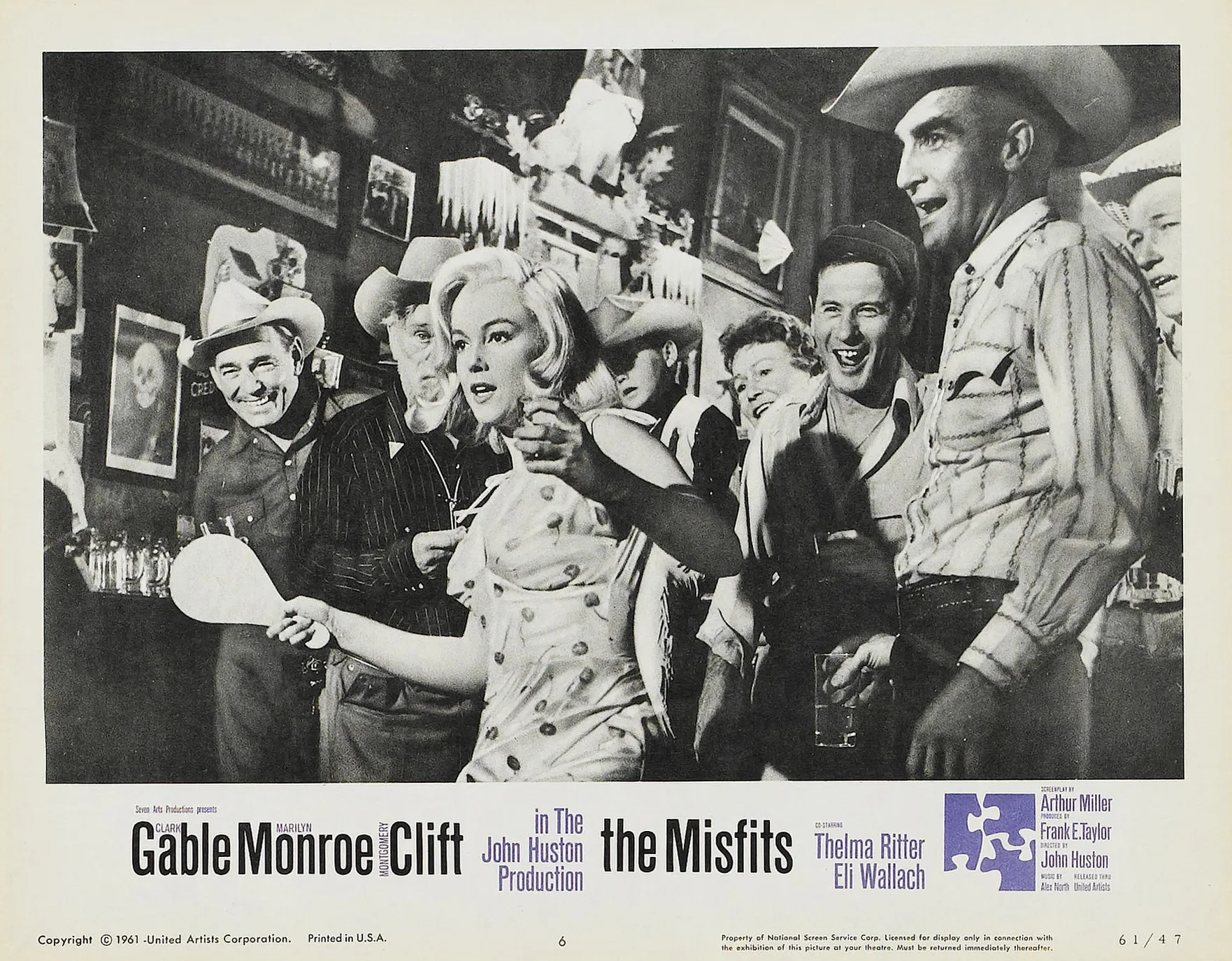
John Huston’s quietly devastating 1961 drama “The Misfits,” starring Marilyn Monroe in her final film, plays at McMurtry Building, Rm. 115, on Thursday, Jan. 11 at 5:30 p.m. This is one hell of a bleak film; you don’t want to miss it.
The cult over only the indexical sign of Marilyn Monroe (the blonde hair, the sexpot husk, the eyes) gets nowhere near her weirdnesses and complexities as a person. Of course, can we ever know? Her performances in her best work — “Don’t Bother To Knock” (1952), “Gentlemen Prefer Blondes” (1953), “Some Like it Hot” (1959), “Let’s Make Love” (1960), and especially “The Misfits” — give us an actual glimpse into one of America’s most obsessed-over stars.
Monroe is Roslyn Taber, an ex-stripper filing for divorce, who ends up in Reno, Nevada with four equally lost sad-sacks at the end of their ropes: the aging cowboy Gay Langland (Clark Gable, in his final film role); former World War II flying ace Guido Racanelli (Eli Wallach, “The Good, the Bad & the Ugly”); a has-been rodeo rider (Montgomery Clift, who soon died after filming from a lifetime of alcohol and drug addiction); and a lonely divorcee, Roslyn’s only friend (Thelma Ritter of “Rear Window” fame). They all strike up a business capturing wild horses.
“The Misfits,” which was scripted by Monroe’s soon-to-be-ex-husband Arthur Miller (yes, that Arthur Miller), punctures the popular perception of Monroe as an unreal sex goddess to be whistled at. As the critic Angelica Jade Bastien writes, “For me, Monroe is evocative more of a mood and a time than just the dumb blonde sexpot she’s become known for. Through this lens, her startling, heartfelt, gorgeous work in “The Misfits” feels strangely like an elegy for the “dumb blonde” she never truly was, and the Hollywood she existed within … she explores and brings to life the cloying weight of loneliness the way few actors can.” Monroe delivers a frighteningly frank performance, as does everyone else in this tired film about tired failures.
“The Misfits” screens as part of the syllabus of Professor Usha Iyer’s course “The Body in Film and Other Media.”
Contact Carlos Valladares at cvall96 ‘at’ stanford.edu.
